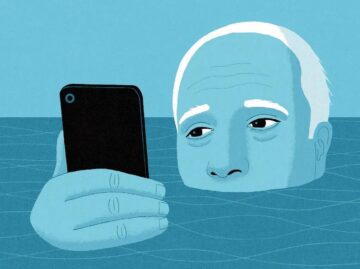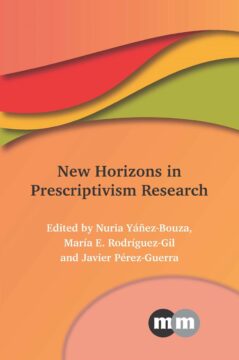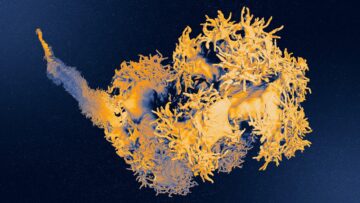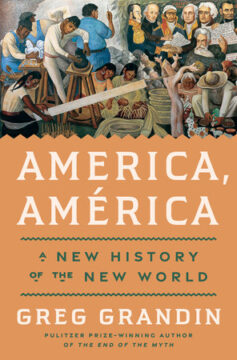Erin O’Donnell in Harvard Magazine:
 Parenting teenagers in 2022 generally entails worrying about their use of platforms such as Instagram, Snapchat, and TikTok; multiple studies point to links between social-media use and anxiety and depression among children and adolescents. Yet a new study reveals similar associations between depression and social-media use for their parents and grandparents too.
Parenting teenagers in 2022 generally entails worrying about their use of platforms such as Instagram, Snapchat, and TikTok; multiple studies point to links between social-media use and anxiety and depression among children and adolescents. Yet a new study reveals similar associations between depression and social-media use for their parents and grandparents too.
The findings come out of the COVID States Project, a series of surveys of adults in all 50 states, which began in spring 2020, soon after the pandemic began. It’s led by a multidisciplinary team of researchers from four universities, including Roy Perlis, the Dozoretz Professor of Psychiatry at Massachusetts General Hospital and Harvard Medical School, and John Della Volpe, director of polling at the Harvard Kennedy School’s Institute of Politics. For this study, they identified more than 5,000 people, with an average age of 56, who showed no signs of depression as measured by a standard screening. Participants initially were asked if they use social media. When surveyed again later, those who used Snapchat, Facebook, and TikTok were more likely to report symptoms of depression.
More here.
Enjoying the content on 3QD? Help keep us going by donating now.

 In the Preface to his landmark Dictionary of 1755, Samuel Johnson wrote that ‘sounds are too volatile and subtile for legal restraints; to enchain syllables, and to lash the wind, are equally the undertakings of pride’. Any dictionary, any grammar, is but a snapshot: all living languages change, and they do so constantly and at every level.
In the Preface to his landmark Dictionary of 1755, Samuel Johnson wrote that ‘sounds are too volatile and subtile for legal restraints; to enchain syllables, and to lash the wind, are equally the undertakings of pride’. Any dictionary, any grammar, is but a snapshot: all living languages change, and they do so constantly and at every level. Like many proud parents,
Like many proud parents,  “America, América” is implicitly a companion volume to Grandin’s Pulitzer Prize-winning
“America, América” is implicitly a companion volume to Grandin’s Pulitzer Prize-winning  We hoped that our collective struggles had made a difference in ending a war that never should have been fought.
We hoped that our collective struggles had made a difference in ending a war that never should have been fought. A proposition: though “trash art” remains with us, the trash artist is a dying species. Trash art is focus-grouped these days, high-gloss. Trash art is a direct-to-streaming show full of people who are slightly too attractive that’s meant to be played in the background while you play Candy Crush on your phone. Even our truly lowbrow cultural productions, like The Bachelor, are not the product of particular people; they’re crafted through a system. Without romanticizing the old days of pulp magazines and Brill Building song writers, we can—ah hell! Let’s romanticize them. Why not? They certainly put out lots of garbage, but it was honest human garbage. Look at an old issue of Weird Tales—in terms of nostalgic reverence, the Partisan Review of pulp fiction—with its now charmingly dated pinup girls on the cover, and its promise of many stupid adventures within, and try not to romanticize it.
A proposition: though “trash art” remains with us, the trash artist is a dying species. Trash art is focus-grouped these days, high-gloss. Trash art is a direct-to-streaming show full of people who are slightly too attractive that’s meant to be played in the background while you play Candy Crush on your phone. Even our truly lowbrow cultural productions, like The Bachelor, are not the product of particular people; they’re crafted through a system. Without romanticizing the old days of pulp magazines and Brill Building song writers, we can—ah hell! Let’s romanticize them. Why not? They certainly put out lots of garbage, but it was honest human garbage. Look at an old issue of Weird Tales—in terms of nostalgic reverence, the Partisan Review of pulp fiction—with its now charmingly dated pinup girls on the cover, and its promise of many stupid adventures within, and try not to romanticize it. The Trump administration
The Trump administration  Last Wednesday night I received an email out of the blue from Larry David, the comedian and creator of “Curb Your Enthusiasm,” saying that he had a guest essay submission. I opened the document and read the first line: “Imagine my surprise when in the spring of 1939 a letter arrived at my house inviting me to dinner at the Old Chancellery with the world’s most reviled man, Adolf Hitler.”
Last Wednesday night I received an email out of the blue from Larry David, the comedian and creator of “Curb Your Enthusiasm,” saying that he had a guest essay submission. I opened the document and read the first line: “Imagine my surprise when in the spring of 1939 a letter arrived at my house inviting me to dinner at the Old Chancellery with the world’s most reviled man, Adolf Hitler.” I don’t carry a camera in my hometown of Chapel Hill, and even though my cellphone contains a camera, I use it only for snapshots. Naturally, there were moments when I wished I had a camera with me. Once, while walking in my neighborhood at twilight, I felt a strange rush of energy in the air, and, suddenly, no more than twenty feet away, a majestically antlered whitetail buck soared over a garden fence and hurtled down the dimming street. Yet even as it was happening—this unexpectedly preternatural moment—I tried to imagine it as a photograph. That’s how we’ve been taught to think. “Oh, I wish I’d had a camera!” But that presumes I would have been prepared to capture the moment—instead of being startled by it. Yet being startled by beauty is a uniquely, and all too rare, human gift. The photograph comes later, when I journey back from astonishment and begin to fiddle with my camera.
I don’t carry a camera in my hometown of Chapel Hill, and even though my cellphone contains a camera, I use it only for snapshots. Naturally, there were moments when I wished I had a camera with me. Once, while walking in my neighborhood at twilight, I felt a strange rush of energy in the air, and, suddenly, no more than twenty feet away, a majestically antlered whitetail buck soared over a garden fence and hurtled down the dimming street. Yet even as it was happening—this unexpectedly preternatural moment—I tried to imagine it as a photograph. That’s how we’ve been taught to think. “Oh, I wish I’d had a camera!” But that presumes I would have been prepared to capture the moment—instead of being startled by it. Yet being startled by beauty is a uniquely, and all too rare, human gift. The photograph comes later, when I journey back from astonishment and begin to fiddle with my camera. For decades, neuroscientists have thought that the brain learns by changing how neurons are connected to one another. As new information and experiences alter how neurons communicate with each other and change their collective activity patterns, some synaptic connections are made stronger while others are made weaker. This process of
For decades, neuroscientists have thought that the brain learns by changing how neurons are connected to one another. As new information and experiences alter how neurons communicate with each other and change their collective activity patterns, some synaptic connections are made stronger while others are made weaker. This process of  It’s been nearly two decades since I finished my undergraduate degree, and my memories of my philosophy major, like most things associated with one’s early adulthood, are hazy at best.
It’s been nearly two decades since I finished my undergraduate degree, and my memories of my philosophy major, like most things associated with one’s early adulthood, are hazy at best. B
B